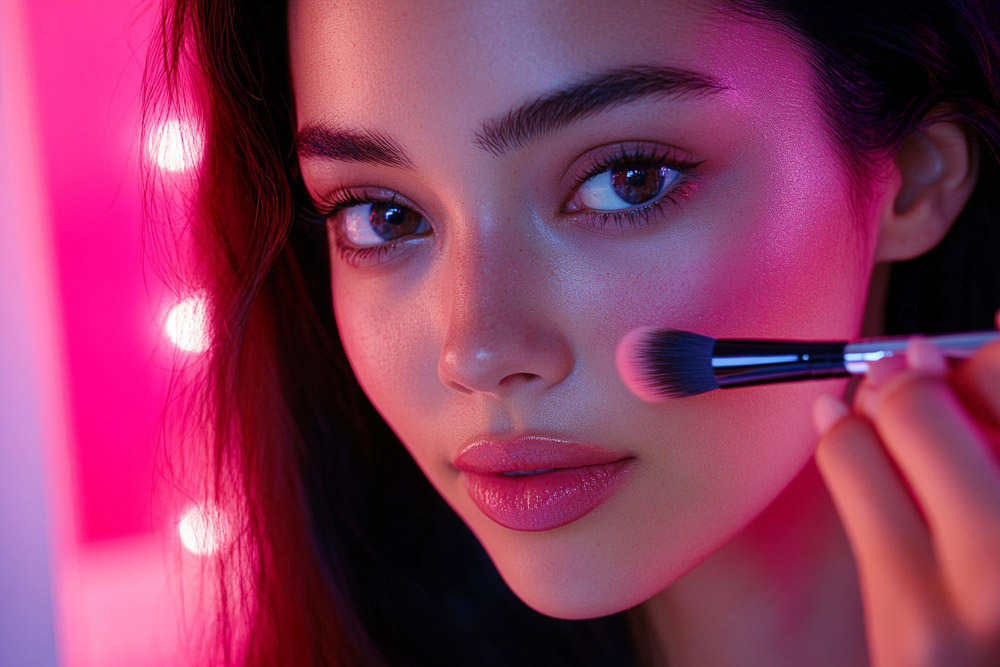Contouring Brushes 101: Choosing the Right Tools for Flawless Application August 21, 2024

Contouring has become a staple in the world of makeup, offering the ability to sculpt, define, and enhance your facial features. However, achieving a flawless contour largely depends on using the right tools. Contouring brushes are essential for creating sharp lines, blending seamlessly, and ensuring that your contour looks natural and professional. This guide will help you choose the right contouring brushes to elevate your makeup game.
Why the Right Contouring Brush Matters
Using the correct brush for contouring is crucial because it directly impacts the precision, blendability, and finish of your makeup. A well-chosen contour brush allows you to apply product accurately, blend it smoothly, and achieve the desired effect without harsh lines. Whether you’re a beginner or a seasoned makeup enthusiast, selecting the right brush can make all the difference in your contouring routine.
Types of Contouring Brushes
There are several types of contouring brushes, each designed for specific techniques and areas of the face. Here’s a breakdown of the most common types:
1. Angled Contour Brush
The angled contour brush is a must-have for any makeup kit. Its slanted shape makes it perfect for applying contour powder or cream along the cheekbones, jawline, and temples. The angled design allows for precise application and easy blending, creating a natural shadow effect that enhances your bone structure.
2. Flat Contour Brush
A flat contour brush has a straight, dense edge, ideal for creating sharp, defined lines. This brush is great for more dramatic contouring, where you want to create a strong contrast between the contoured areas and the rest of your face. It’s especially useful for contouring the nose and under the cheekbones.
3. Contour Blender Brush
The contour blender brush is softer and fluffier, designed for blending out harsh lines and ensuring a seamless finish. After applying your contour with a more precise brush, use the blender brush to soften the edges and merge the contour into your foundation for a flawless look.
4. Fan Brush
Fan brushes are versatile tools that can be used for both highlighting and contouring. The fan shape allows for light, sweeping motions that are perfect for applying a subtle contour along the hairline, jawline, and cheekbones. This brush is also excellent for dusting off excess powder and creating a soft, diffused effect.
5. Precision Contour Brush
The precision contour brush is smaller and more tapered, making it ideal for detailed work, such as contouring the nose or adding definition to smaller areas of the face. Its size allows for greater control and precision, ensuring that you can achieve a more refined and polished look.
Choosing the Right Brush for Your Contour Product
The type of contour product you use—whether it’s powder, cream, or liquid—also influences the brush you should choose:
- Powder Contour: Opt for brushes with natural bristles, as they pick up and distribute powder more evenly. Angled or flat brushes work well for powder contour products.
- Cream or Liquid Contour: Synthetic bristles are best for cream or liquid products because they don’t absorb as much product and allow for smoother application. A dense, flat brush or a contour blender brush is ideal.
Tips for Using Contouring Brushes
To achieve the best results with your contouring brushes, keep these tips in mind:
- Blend, Blend, Blend: The key to a natural-looking contour is thorough blending. Use a blender brush to soften any harsh lines and ensure your contour merges seamlessly with your foundation.
- Use a Light Hand: It’s easier to build up contour gradually than to remove excess product. Start with a small amount of product on your brush and build up to the desired intensity.
- Clean Your Brushes Regularly: Dirty brushes can cause streaks and uneven application. Clean your contour brushes regularly to maintain their performance and ensure a smooth finish.
- Match Your Brush to Your Face Shape: Different face shapes may require different contouring techniques. Choose a brush that suits the areas you want to contour, whether it’s the cheekbones, jawline, or nose.
Conclusion
Choosing the right contouring brushes is essential for achieving a flawless, professional-looking contour. Whether you’re using an angled brush for precise application or a blender brush for a seamless finish, the right tools can transform your makeup routine. Invest in quality brushes that suit your contour products and your face shape, and you’ll be well on your way to mastering the art of contouring.
